Abstract
In previous studies the existence of anti-adrenal, cellular hypersensitivity in idiopathic Addison's disease was demonstrated by means of the leucocyte migration test.
The antigenic activity of variously derived adrenocortical material was examined to evaluate the species-specificity of the reactivity and determine the subcellular localization of the antigen.
As with extract of foetal, human adrenals it could be demonstrated that extracts of adult human benign-hyperplastic adrenals, of pig adrenals and of monkey adrenals possessed the capacity to induce an inhibition of the in vitro migration of leucocytes from patients with idiopathic Addison's disease.
A similar reactivity was not seen with extracts of adrenocortical adenoma or adrenocortical carcinomas in parallel experiments. Out of the various subcellular fractions isolated from adult human benign-hyperplastic adrenals only the mitochondrial fraction was able to induce migration inhibition, indicating that the anti-adrenal cellular and the anti-adrenal humoral hypersensitivity in idiopathic Addison's disease are probably directed against different antigenic determinants at the subcellular level.
Full text
PDF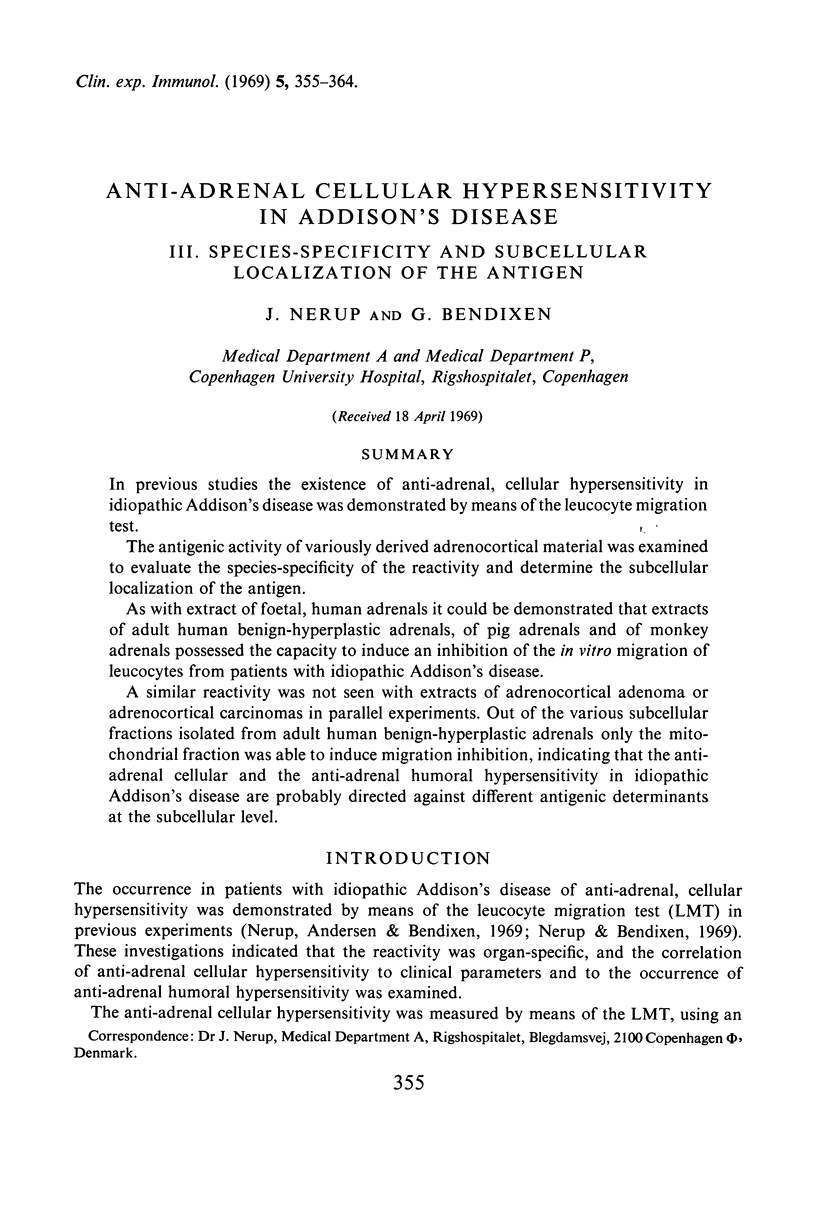
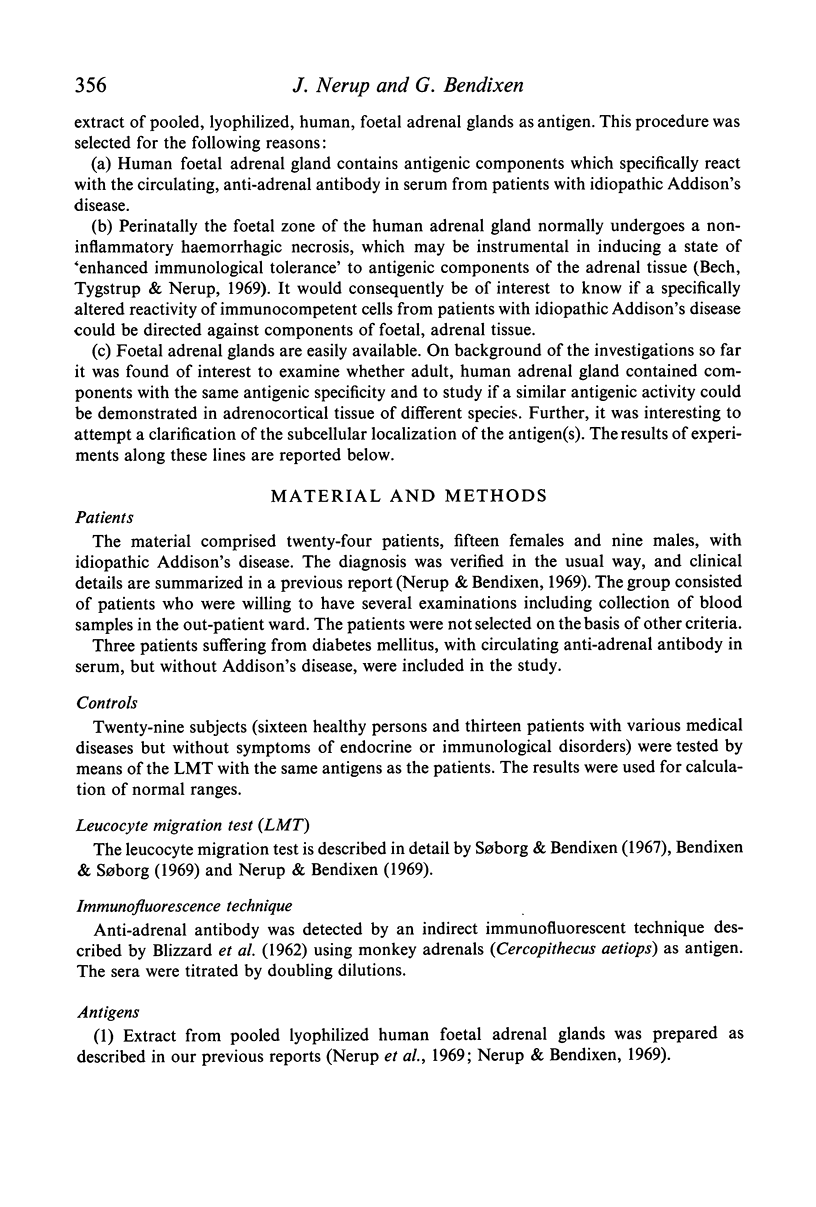
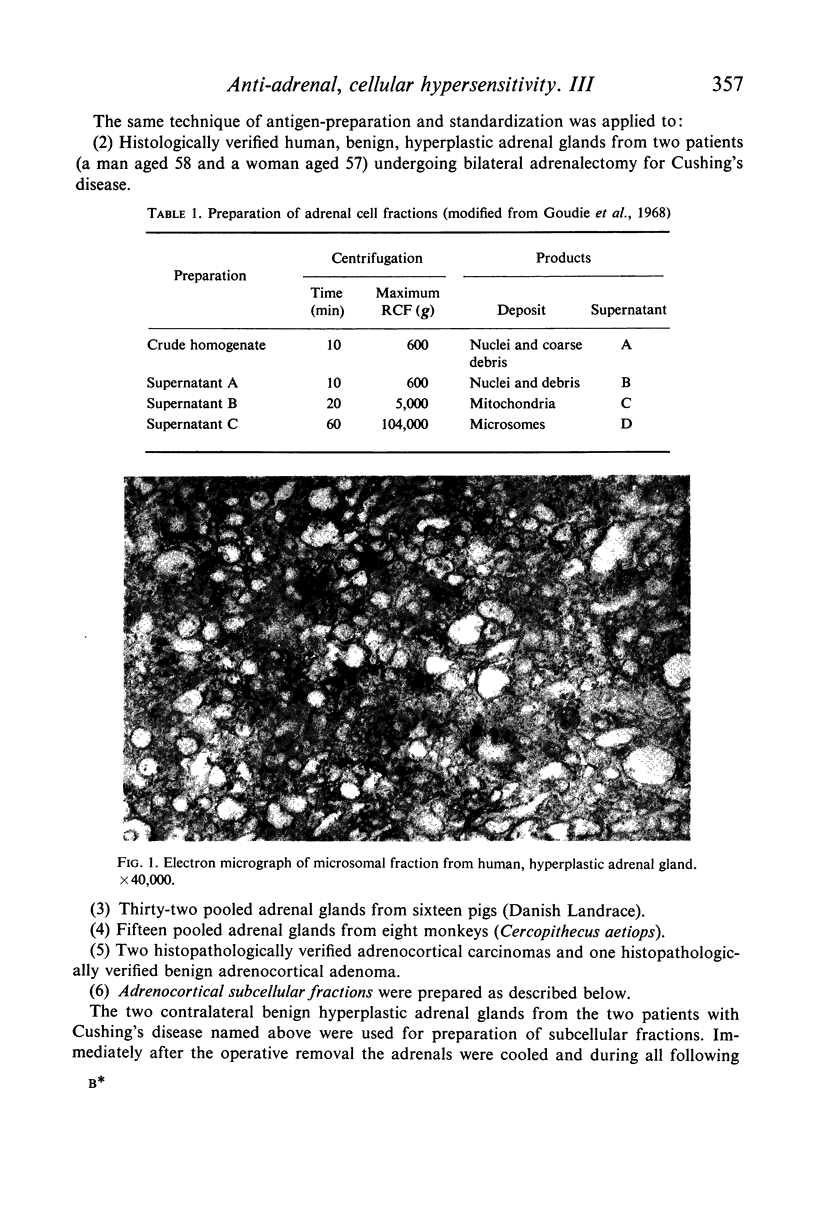




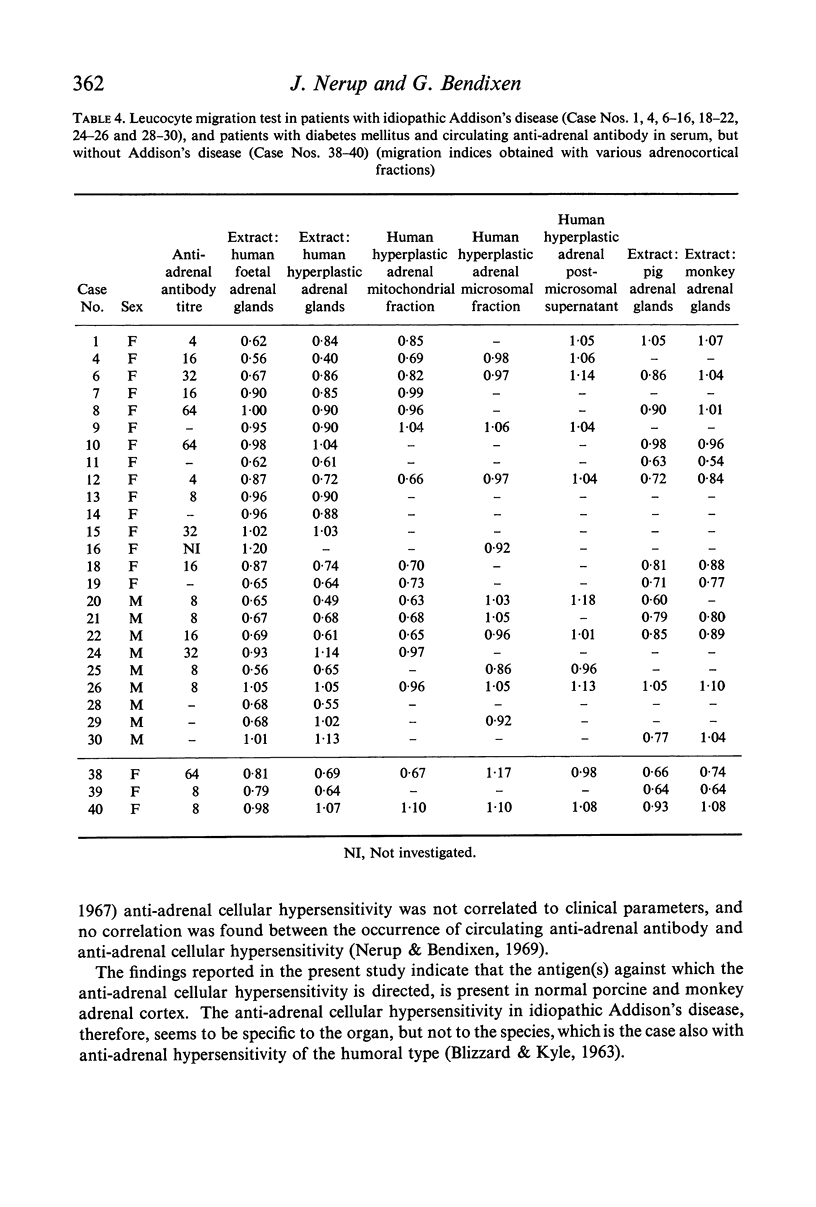
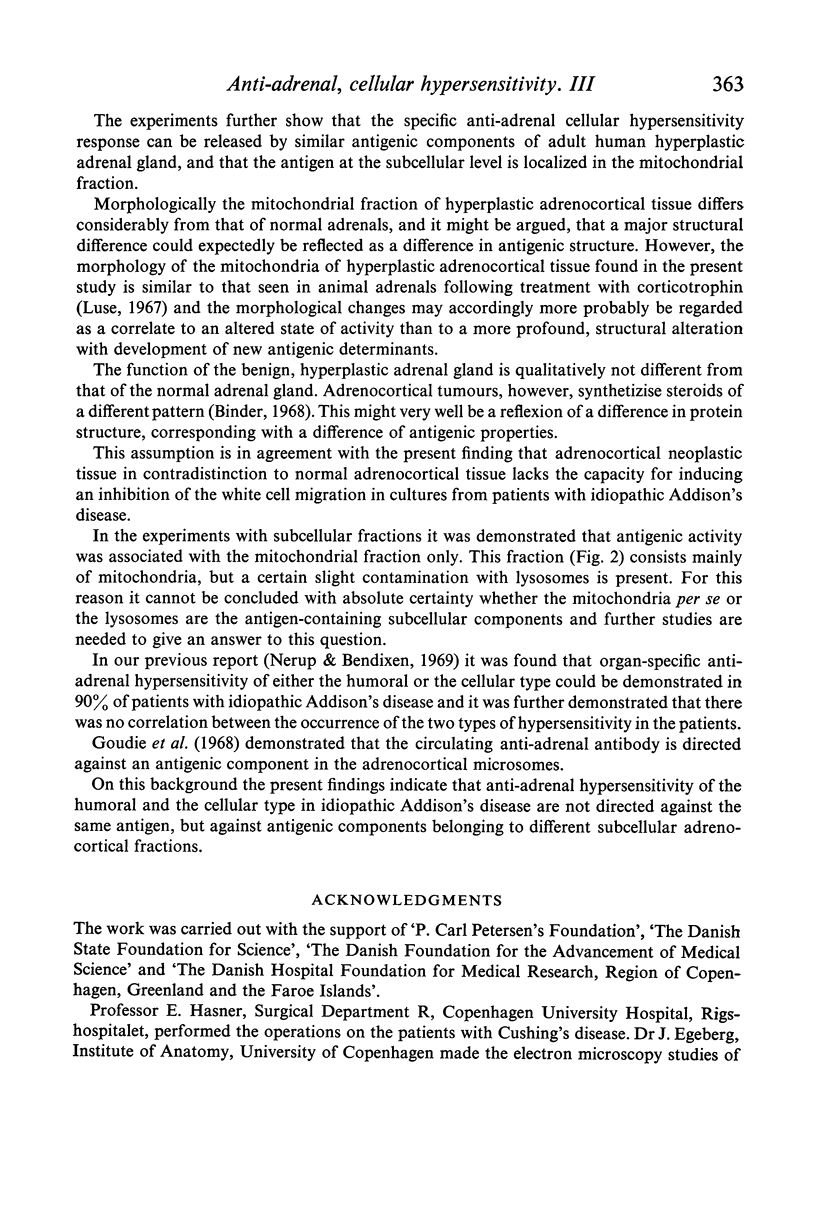
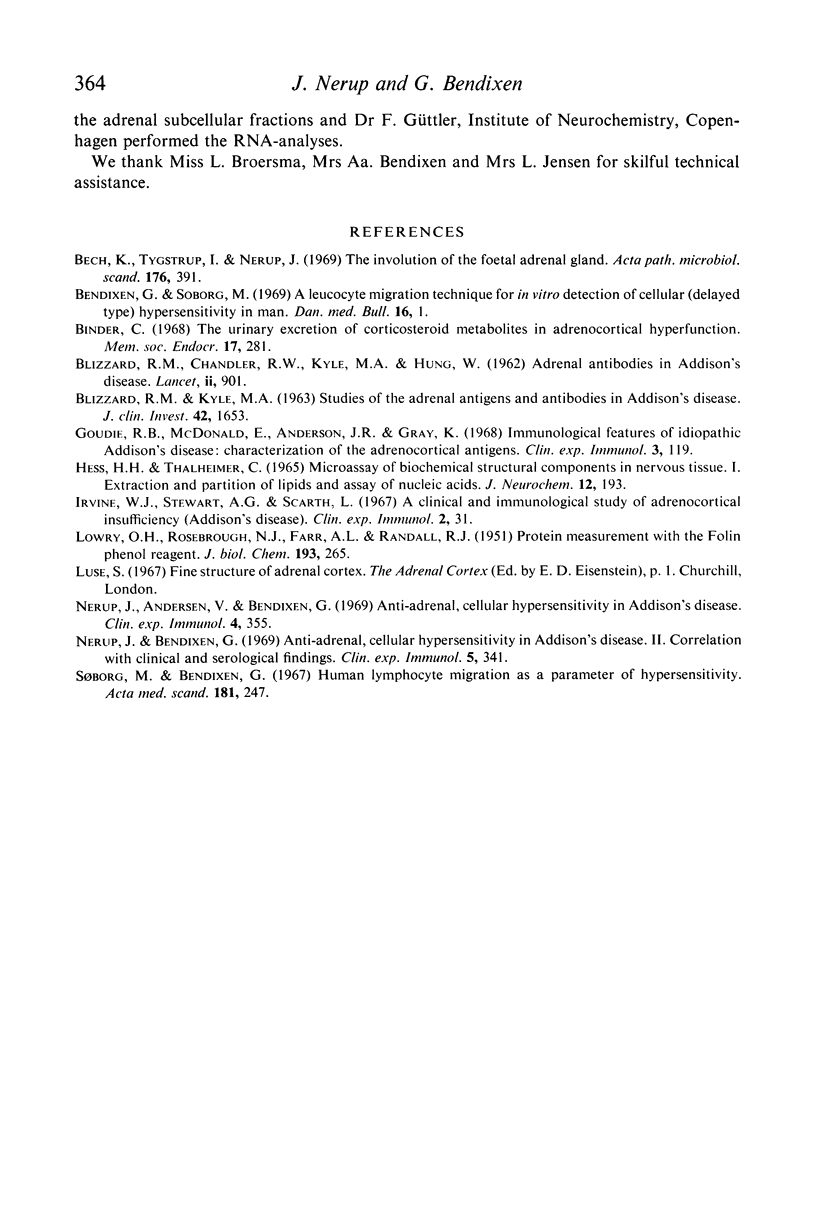
Images in this article
Selected References
These references are in PubMed. This may not be the complete list of references from this article.
- BLIZZARD R. M., CHANDLER R. W., KYLE M. A., HUNG W. Adrenal antibodies in Addison's disease. Lancet. 1962 Nov 3;2(7262):901–903. doi: 10.1016/s0140-6736(62)90681-5. [DOI] [PubMed] [Google Scholar]
- BLIZZARD R. M., KYLE M. STUDIES OF THE ADRENAL ANTIGENS AND ANTIBODIES IN ADDISON'S DISEASE. J Clin Invest. 1963 Oct;42:1653–1660. doi: 10.1172/JCI104851. [DOI] [PMC free article] [PubMed] [Google Scholar]
- Bech K., Tygstrup I., Nerup J. The involution of the foetal adrenal cortex. A light microscopic study. Acta Pathol Microbiol Scand. 1969;76(3):391–400. doi: 10.1111/j.1699-0463.1969.tb03270.x. [DOI] [PubMed] [Google Scholar]
- Bendixen G., Soborg M. A leucocyte migration technique for in vitro detection of cellular (delayed type) hypersensitivity in man. Dan Med Bull. 1969 Jan;16(1):1–6. [PubMed] [Google Scholar]
- Goudie R. B., McDonald E., Anderson J. R., Gray K. Immunological features of idiopathic Addison's disease: characterization of the adrenocortical antigens. Clin Exp Immunol. 1968 Feb;3(2):119–131. [PMC free article] [PubMed] [Google Scholar]
- HESS H. H., THALHEIMER C. MICROASSAY OF BIOCHEMICAL STRUCTURAL COMPONENTS IN NERVOUS TISSUES. I. EXTRACTION AND PARTITION OF LIPIDS AND ASSAY OF NUCLEIC ACIDS. J Neurochem. 1965 Mar;12:193–204. doi: 10.1111/j.1471-4159.1965.tb06755.x. [DOI] [PubMed] [Google Scholar]
- Irvine W. J., Stewart A. G., Scarth L. A clinical and immunological study of adrenocortical insufficiency (Addison's disease). Clin Exp Immunol. 1967 Jan;2(1):31–70. [PMC free article] [PubMed] [Google Scholar]
- LOWRY O. H., ROSEBROUGH N. J., FARR A. L., RANDALL R. J. Protein measurement with the Folin phenol reagent. J Biol Chem. 1951 Nov;193(1):265–275. [PubMed] [Google Scholar]
- Nerup J., Andersen V., Bendixen G. Anti-adrenal, cellular hypersensitivity in Addison's disease. Clin Exp Immunol. 1969 Apr;4(4):355–363. [PMC free article] [PubMed] [Google Scholar]
- Nerup J., Bendixen G. Anti-adrenal cellular hypersensitivity in Addison's disease. II. Correlation with clinical and serological findings. Clin Exp Immunol. 1969 Oct;5(4):341–353. [PMC free article] [PubMed] [Google Scholar]
- Soborg M., Bendixen G. Human lymphocyte migration as a parameter of hypersensitivity. Acta Med Scand. 1967 Feb;181(2):247–256. doi: 10.1111/j.0954-6820.1967.tb07255.x. [DOI] [PubMed] [Google Scholar]




